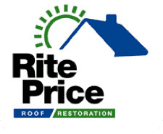Replacing your roof can be a very costly home improvement. If you pay attention to your roof throughout its lifetime, however, you can significantly increase the length of its life and save yourself money while you’re at it. All it takes is a little extra effort with monitoring its status, checking the roof after bad wind storms and other harsh weather, cleaning gutters, and restoring it when necessary. Here are some modern roof restoration techniques that will bring your roof back to the 21st century and save you the money of a complete replacement.
When You Have a Dirty Roof: Cleaning Methods
Sometimes all that is required in a roof restoration is a good roof cleaning to rid the roof of mould, mildew, and moss that has built up over the years. You’ll know that your roof needs to be cleaned when you see green algae, clumps of moss, or black marks that resemble mould.
If you have a wooden roof, it is important to clean your roof and rid it of debris as soon as possible. Moss can actually grow inside the wood shingles, and if it stays for too long it can cause serious damage like wood rot to your roof, which will ultimately cause more problems, such as leakage. You should avoid using a pressure washer on your wood roof, as this method can damage your wood shingles. Instead, get out a bucket of half bleach, half water and use a stiff-bristled brush to clean off the moss, mould, and mildew. You should clean your gutters while you’re up there as well!
You should also avoid using a pressure washer on an asphalt roof, as this can damage the granules. If you have a metal roof, however, pressure washing is a good method for removing the same types of debris. To prevent further growth of moss, you can install zinc strips near the peak of the roof, which will create an uninhabitable surface for further debris to grow.
When You Have a Leaky Roof: Restorative Coating
One method that you can use if you have an asphalt or metal roof is a restorative coating that will bring a damaged or leaky roof (or one on its way to becoming one) back to life. This type of restorative coating can be applied to an asphalt roof as well as a metal roof. Restorative coatings work well on flat roofs and can also be applied to peaked roofs.
A restorative coating for a metal roof involves several steps. It begins with a primer, uses caulking around bolts and tape around seam treatment, and then coats it with a protective, often reflective, surface.
For asphalt, a roofing adhesive is applied that is a coal-tar based, cold-process substance that prevents further leaking of the roof. Some of the coatings are white in colour, while others will blend in and provide soundproofing, protection, and fire resistance. Certain types of coating are designed for emergency leaks, and can be used to immediately put a stop to a roof leak.
When You Have Damage: Replacing Shingles
With asphalt shingle roofs, the good news is that you can replace damaged shingles without having to replace the entire roof. This is a restoration technique that you can complete yourself. It won’t be very difficult if you are a handy person.
First, you should inspect your roof carefully to see if any shingles need replacing. Signs that shingles are damaged or worn include the edges of the shingle curling up, a brittle or dry appearance, bareness of granules, and cracking. You can also check your gutters for signs of granule build-up, which is an indication of wearing shingles.
Any shingles that you determine are damaged or worn should be replaced as soon as possible to prevent further problems. You should also check your roof after windstorms or any other extreme weather to ensure there are no additional damaged shingles.
To replace an asphalt shingle, start by removing the nails with a pry bar; each shingle is secured with four nails, but the securing nails of the next row often pass through the shingle below. Therefore, there may be a total of eight nails to remove before you can add a new shingle. Once the nails are removed, slide the new shingle into place, and secure it with four 11/4-in. roofing nails.
When You Have Rust: Replacing Old Flashings
Flashings are the metal or vinyl components of your roof that are found at uneven surfaces and seams, like around the chimney. Their main purpose is to prevent leaking and funnel water away from these vulnerable areas. Rusted and damaged flashings can result in decreased performance with keeping the interior of your home dry. If they’re damaged or visibly worn, flashings should be replaced or repaired during your roof restoration.
To repair a flashing, first ensure that nails are holding the flashings well in place, and that there is no warping in the surrounding shingles that might suggest water damage. Take a wire brush and scrape away any rust from the flashing’s surface, and sand it afterwards if necessary. You should also remove any old caulk or loose substances, like roofing cement, with a metal putty knife.
Wash the flashing with a mixture of trisodium phosphate and water, apply a rust converter to the affected areas, and then follow it with a latex coat of paint after it is dry. With a putty knife, apply roofing cement to the edges of the flashing, ensuring that no water can get beneath its surface.
Doing your due diligence and making your incremental roof restorations is important to maintaining the overall shape of your home. Since your roof is the number one barrier keeping your home dry and inhabitable, taking the time to maintain it will be well worth your while. Regardless of which specific measures you take to maintain and restore your roof, you (and your bank account!) will certainly be glad you took the time do so.

